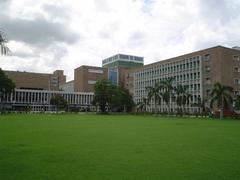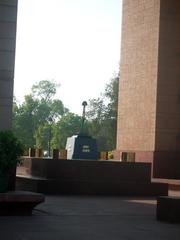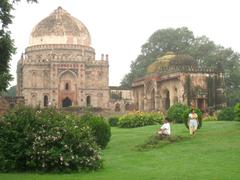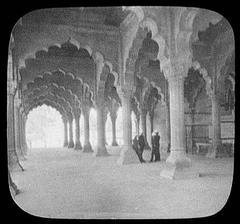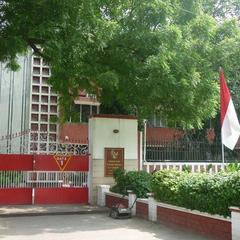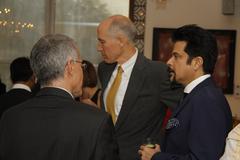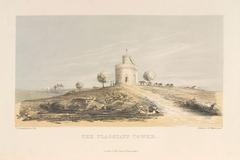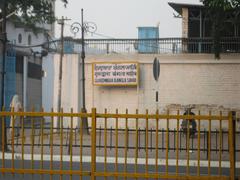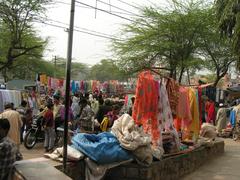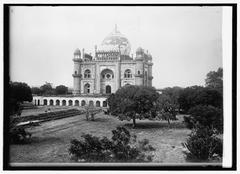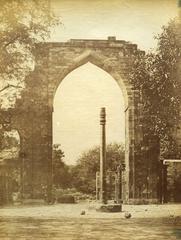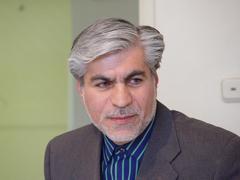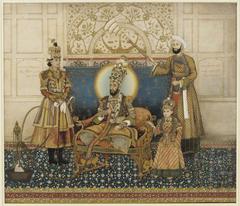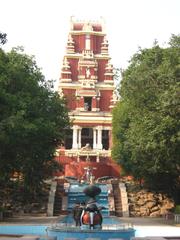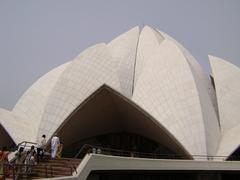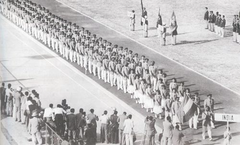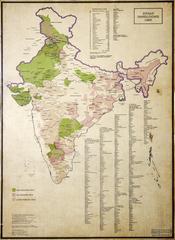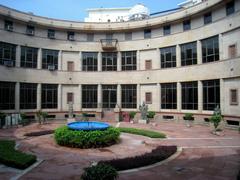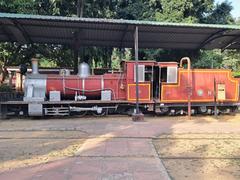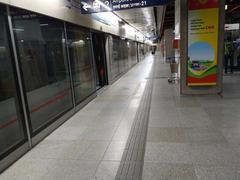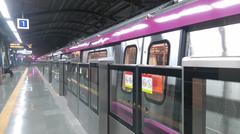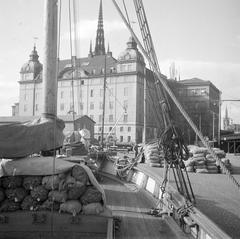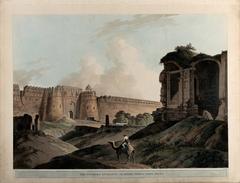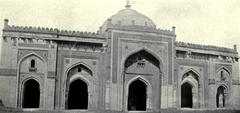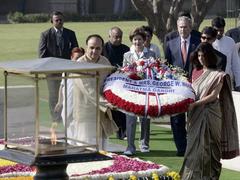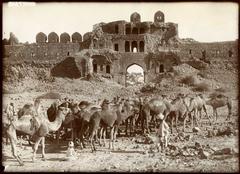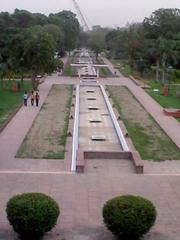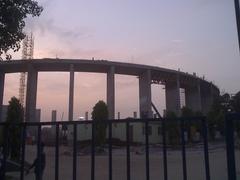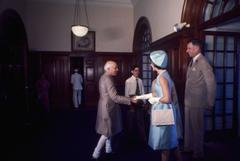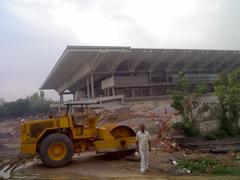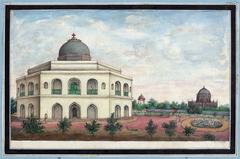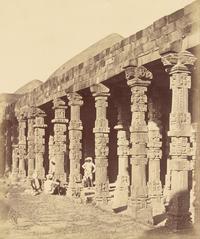Comprehensive Guide to Visiting Delhi-Meerut Expressway, New Delhi, India
Date: 23/07/2024
Introduction
The Delhi-Meerut Expressway (DME) is a monumental infrastructure project that has significantly transformed travel and regional development in the National Capital Region (NCR) of India. Spanning approximately 96 kilometers, this expressway connects New Delhi with Meerut, a historic city in Uttar Pradesh, slashing travel time from around 2.5 hours to just 45 minutes. Conceived in the early 2000s as part of the broader National Highways Development Project (NHDP), the DME was designed to decongest the heavily trafficked NH-58 and improve connectivity between these two vital urban centers (NHAI). Officially approved in 2014, the project saw phased construction, with the first phase inaugurated in 2018 and the entire expressway opening to the public in April 2021 (Times of India). This expressway is not just a road but a symbol of modern technological advancements, economic growth, and cultural connectivity. Featuring intelligent traffic management systems, advanced pavement technology, and eco-friendly measures like solar-powered lighting and extensive tree planting, the DME stands as a testament to sustainable and innovative infrastructure development (ITMS). This guide provides comprehensive information on the expressway’s history, technological innovations, visitor information, travel tips, and its broader economic and social impacts, making it a must-read for anyone planning to travel this route or interested in its transformative potential.
Table of Contents
- Introduction
- History of the Delhi-Meerut Expressway
- Technological Innovations
- Inauguration and Public Reception
- Visiting Hours and Ticket Information
- Travel Tips
- Nearby Attractions
- Accessibility
- Historical Significance
- Economic Impact
- Cultural and Social Impact
- Challenges and Criticisms
- Future Prospects
- FAQ Section
- Conclusion
History of the Delhi-Meerut Expressway
Early Conception and Planning
The idea for the Delhi-Meerut Expressway was conceived in the early 2000s as part of the broader National Highways Development Project (NHDP) initiated by the Government of India. The primary objective was to decongest the existing NH-58, notorious for heavy traffic and frequent bottlenecks.
Approval and Funding
The project received formal approval from the Cabinet Committee on Economic Affairs (CCEA) in 2014, with an estimated cost of around INR 7,566 crore (approximately USD 1.1 billion). Funding was sourced from a combination of government allocations and private investments under the Public-Private Partnership (PPP) model. The National Highways Authority of India (NHAI) was designated as the implementing agency (NHAI).
Phased Construction
The construction was divided into four phases:
- Phase I - From Nizamuddin Bridge in Delhi to UP Gate, spanning approximately 8.7 kilometers. It includes a 14-lane expressway.
- Phase II - Extending from UP Gate to Dasna, covering around 19.2 kilometers, with a six-lane expressway and an eight-lane National Highway.
- Phase III - From Dasna to Hapur, covering 22.2 kilometers, involving a six-lane expressway.
- Phase IV - From Dasna to Meerut, spanning approximately 46 kilometers, with a six-lane expressway and a four-lane service road.
Technological Innovations
The expressway incorporates several technological innovations:
- Intelligent Traffic Management System (ITMS) - Features like automatic number plate recognition, speed detection cameras, and variable message signboards (ITMS).
- Advanced Pavement Technology - High-quality bituminous and concrete materials ensure durability.
- Eco-Friendly Measures - Over 2.5 lakh trees planted along the expressway and solar-powered lighting systems.
Inauguration and Public Reception
The first phase was inaugurated by Prime Minister Narendra Modi on May 27, 2018. The entire project was completed and opened to the public in April 2021, reducing travel time between Delhi and Meerut from over two hours to just about 45 minutes (Times of India).
Visiting Hours and Ticket Information
- Visiting Hours - The expressway is open 24 hours a day, 7 days a week.
- Toll Fees - Toll fees vary depending on the type of vehicle and distance traveled. For the latest toll charges, please visit the NHAI website (NHAI).
Travel Tips
- Peak Hours - Avoid peak hours (8 AM - 10 AM and 5 PM - 7 PM) for a smoother journey.
- Rest Stops - Utilize the well-maintained rest stops along the expressway for breaks and refreshments.
- Safety - Adhere to speed limits and traffic rules for a safe travel experience.
Nearby Attractions
- In Delhi - Red Fort, Qutub Minar, India Gate.
- In Meerut - Augarnath Temple, St. John’s Church.
Accessibility
The expressway is designed to be accessible for all types of vehicles, including cars, buses, and heavy trucks. Special lanes are available for two-wheelers and non-motorized vehicles.
Historical Significance
The expressway passes through regions pivotal in India’s history, including areas near the Yamuna River and Meerut, known for its role in the 1857 Indian Rebellion (Britannica).
Economic Impact
Improved connectivity has led to increased industrial activities and a rise in real estate prices along the expressway corridor (Economic Times).
Cultural and Social Impact
The expressway facilitates easier access to cultural landmarks and heritage sites, enhancing the quality of life for residents (Cultural India).
Challenges and Criticisms
The project faced land acquisition issues and environmental concerns, but steps have been taken to mitigate these issues through compensatory afforestation and stringent pollution control measures (Down To Earth).
Future Prospects
Plans are underway to extend the expressway to connect with other major cities in Uttar Pradesh, enhancing regional connectivity and encouraging more investments in similar initiatives (NITI Aayog).
FAQ Section
Q: What are the toll charges for the Delhi-Meerut Expressway? A: Toll charges vary by vehicle type and distance. Check the NHAI website for the latest fees.
Q: Is the expressway open 24/7? A: Yes, the expressway is open 24 hours a day, 7 days a week.
Q: Are there rest stops along the expressway? A: Yes, there are well-maintained rest stops for breaks and refreshments.
Conclusion
The Delhi-Meerut Expressway is more than just an infrastructural achievement; it is a transformative force that has reshaped the landscape of travel, regional development, and economic growth in the National Capital Region. By significantly reducing travel time between New Delhi and Meerut, the DME has enhanced connectivity, facilitated smoother trade and commerce, and spurred real estate development along its corridor (Economic Times). Its eco-friendly initiatives, such as solar-powered lighting and extensive tree planting, also highlight the project’s commitment to sustainable development. Moreover, the expressway has improved access to healthcare and educational institutions, thereby positively impacting the quality of life for residents in the region (Cultural India). While challenges such as land acquisition and environmental concerns were addressed through compensatory measures, the expressway stands as a model for future infrastructure projects in India (Down To Earth). Looking ahead, plans to extend the expressway to connect with other major cities in Uttar Pradesh promise to further enhance regional connectivity and drive economic growth (NITI Aayog). In essence, the Delhi-Meerut Expressway is a landmark project that showcases the potential of well-planned infrastructure to drive national progress, making it a cornerstone of India’s journey towards a more connected and prosperous future.
References
- National Highways Authority of India (NHAI) https://www.nhai.gov.in
- Times of India (2018). Inauguration of Delhi-Meerut Expressway. https://timesofindia.indiatimes.com
- Intelligent Traffic Management System (ITMS) https://www.itms.com
- Economic Times (2021). Economic Impact of Delhi-Meerut Expressway. https://economictimes.indiatimes.com
- Cultural India (2021). Delhi-Meerut Expressway: Cultural and Social Impact. https://www.culturalindia.net
- Down To Earth (2021). Environmental Challenges of Delhi-Meerut Expressway. https://www.downtoearth.org.in
- NITI Aayog (2021). Future Prospects of Delhi-Meerut Expressway. https://www.niti.gov.in

